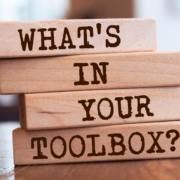DBT Skills Series 12
Coping Ahead: The DBT Skill That Helps Prepare for Stress
When you know something stressful is coming, what does your mind do? For many people, it jumps straight to the worst-case scenario. Maybe you picture yourself freezing up, saying the wrong thing, or falling apart. The more you think about it, the more anxious you feel.
Cope Ahead helps you do the opposite. Instead of imagining disaster, you intentionally rehearse yourself coping well. You imagine the situation clearly in your mind and picture yourself staying calm, using your DBT skills, and handling it in the way you want to. Stress may still show up, but you’ll already have a plan for meeting it with confidence.
This skill falls under Emotion Regulation in DBT, where the focus is on learning ways to reduce vulnerability to intense emotions. Along with Accumulating Positives (building joy) and Building Mastery (strengthening competence), Cope Ahead is another way to reduce vulnerability to overwhelming emotions. It’s about planting seeds of resilience before the storm hits.
What Is Cope Ahead?
 Cope Ahead is a mental rehearsal. Just like an athlete runs through plays in their head before a game or a musician practices in their mind before stepping on stage, you’re giving yourself a chance to prepare. You walk through the steps of what’s coming, imagine the emotions you might feel, and then picture yourself using your skills to respond effectively.
Cope Ahead is a mental rehearsal. Just like an athlete runs through plays in their head before a game or a musician practices in their mind before stepping on stage, you’re giving yourself a chance to prepare. You walk through the steps of what’s coming, imagine the emotions you might feel, and then picture yourself using your skills to respond effectively.
It’s a deliberate, structured exercise—not passive daydreaming. You choose a specific situation, visualize it as vividly as possible, and rehearse how you’ll handle it. By the time you get there in real life, it feels more familiar—like you’ve already practiced.
Why This Skill Matters
Stressful situations are part of life. You can’t control every difficult meeting, conversation, or challenge. When you practice Cope Ahead, you walk in with:
- Confidence. You’ve already pictured yourself coping skillfully, so your brain recognizes the path forward.
- Calm. Your body isn’t entirely caught off guard, because you’ve “trained” it to handle the situation.
- Clarity. Instead of spinning in Emotion Mind, you’re closer to Wise Mind, ready to make thoughtful choices.
Think of it as mental armor. You may still feel stress, but you’re far less likely to be thrown off course.
How to Practice Cope Ahead
Here’s a step-by-step way to try it:
- Pick a situation. Choose something in the future that you know might be stressful. It could be as small as making a phone call you’ve been avoiding, or as big as a presentation at work.
- Imagine it vividly. Picture yourself right there in the moment. Notice what the space looks like, what sounds are around you, and how your body feels. Make it as real in your mind as possible.
- Rehearse using your skills. See yourself taking a deep breath, grounding in Wise Mind, or using STOP before reacting. You may envision yourself speaking up calmly, walking away instead of yelling, or reminding yourself of effective coping statements.
- Play it through like a movie. Observe the situation unfold and notice how you cope effectively at each step. Even if challenges arise during mental rehearsal, see yourself handling them effectively.
- End with encouragement—and relaxation. Remind yourself, “I can handle this. I’ve practiced. I know what to do.” Then take a few minutes afterward to relax—whatever that means to you. Let your body settle and your breathing slow. This moment of relaxation helps your brain associate stress with recovery, teaching it that calm can follow even the most difficult situations.
These steps come directly from the evidence-based framework of Dialectical Behavior Therapy (DBT), originally developed by Dr. Marsha Linehan. For a deeper look at this skill and others in the Emotion Regulation module, see DBT Skills Training Manual, Second Edition..
A Real-Life Example
Let’s say you have a performance review coming up at work. Usually, you might spend the week imagining all the terrible feedback you could get, feeling your anxiety rise higher and higher.
 Using Cope Ahead, you do something different. You picture yourself walking into the office with your shoulders relaxed. You imagine taking a paced breath before you sit down. As your supervisor begins to talk, you visualize yourself listening calmly—even if the feedback is constructive. When it’s your turn to respond, you see yourself thanking them, asking thoughtful questions, and leaving the meeting with a sense of pride that you handled it effectively.
Using Cope Ahead, you do something different. You picture yourself walking into the office with your shoulders relaxed. You imagine taking a paced breath before you sit down. As your supervisor begins to talk, you visualize yourself listening calmly—even if the feedback is constructive. When it’s your turn to respond, you see yourself thanking them, asking thoughtful questions, and leaving the meeting with a sense of pride that you handled it effectively.
Now, when the day comes, you’re not walking in blind. Your body and mind already know what it feels like to cope skillfully.
Why It Works
Your brain has an incredible ability: it responds to vividly imagined experiences in many of the same ways it responds to real ones. When you mentally rehearse yourself coping well, your nervous system “practices” alongside your mind.
Instead of wiring in panic and avoidance, you’re wiring in calm and effectiveness. This makes it far easier to access those states in real life. By Coping Ahead, you’re building a bridge toward Wise Mind. So when the stressful moment arrives, you already know the way across.
The Science Behind It
Neuroscientists describe this process as the brain constantly predicting what’s about to happen. Lisa Feldman Barrett explains this in terms of your brain managing a “body budget” — always balancing resources like energy, arousal, and attention. E. R. Caldwell, in “Taking Control of How Your Brain Constructs Reality“, explains that we can shape the way our brains predict and prepare for what’s ahead. That’s precisely what Cope Ahead does—it helps your brain rehearse calm and confidence rather than panic or avoidance. Instead of bracing for panic, your brain starts anticipating capability — and that changes the way you actually feel in the moment.
Your Challenge This Week
Think ahead: what’s one situation coming up that you’re nervous about? Maybe it’s:
- Bringing up something uncomfortable with a friend or loved one.
- Speaking up in a meeting.
- Attending a social event where you often feel anxious.
This week, try Cope Ahead. Walk yourself through the steps. Make it vivid, imagine yourself coping effectively, finish with encouragement, and then practice relaxation.
Notice how you feel when the moment actually arrives. You may still feel stress—that’s normal—but you might also notice increased calm, clarity, and confidence than before.
Bringing It All Together
Challenges are part of life, and intense emotions will still come and go. Cope Ahead doesn’t make stress disappear—it helps you meet it differently. With each practice, your brain and body learn that you can face what’s ahead and recover your balance afterward.
 Just like Accumulating Positives and Building Mastery, Cope Ahead is one more way to lower your emotional vulnerability and increase resilience. By preparing ahead, you’re not only caring for your future self — you’re also reminding yourself in the present moment that you already have the strength to cope.
Just like Accumulating Positives and Building Mastery, Cope Ahead is one more way to lower your emotional vulnerability and increase resilience. By preparing ahead, you’re not only caring for your future self — you’re also reminding yourself in the present moment that you already have the strength to cope.
Every time you practice, you reinforce the message: I am capable. I can handle this. And that simple preparation can change the entire course of a difficult moment.
Integrating DBT and Beyond
This blog is part of my ongoing DBT Skills Series, where I break down practical tools you can use to regulate emotions, reduce suffering, and build a life that feels worth living. In addition to skills training, I provide comprehensive DBT therapy, EMDR therapy, and trauma-focused individual sessions. I specialize in supporting adults as they navigate challenges like emotional dysregulation, trauma, anxiety, depression, borderline personality disorder (BPD) and relationship difficulties.
If you’d like support applying these skills in your own life, I’d be glad to help. You can learn more at Integrative Path Therapy, or contact me here.








